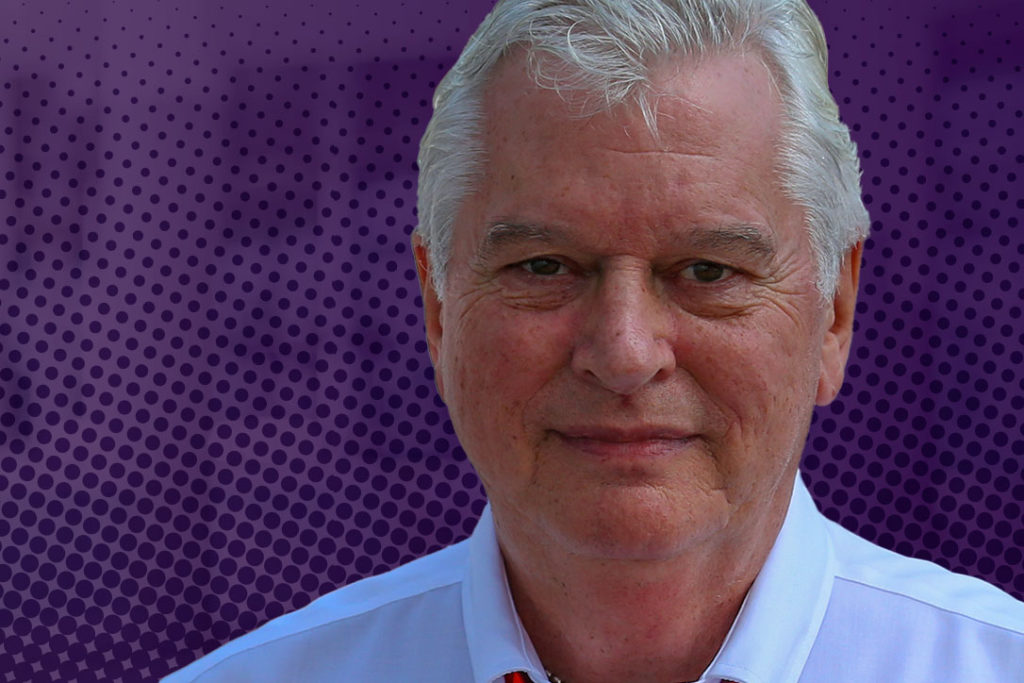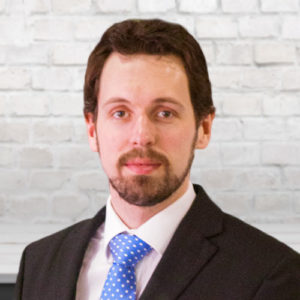Following the Covid-19 ventilator challenge, Formula One’s chief technical officer Pat Symonds tells Matthew D’Arcy why motorsport has more to offer healthcare.
Pat Symonds is not a name that you might traditionally associate with healthcare. A highly respected, multi World Championship winning Formula One engineer, he has held numerous prominent roles in the sport.
Symonds was Michael Schumacher’s race engineer in the mid-1990s and has held some of the most senior technical roles in leading teams; until the end of the 2016 season, he was chief technical officer for Williams.
Now he’s the chief technical officer for F1 itself, responsible for regulating technical developments in the sport on behalf it’s commercial rights holders. But his focus took a sudden turn in March, at the onset of the coronavirus pandemic.
The ventilator challenge
“It all started on 17 March,” says Symonds. “I got a call asking whether Formula One could get involved in the ventilator challenge. It came from the chief technology officer for Innovate UK – Mark Gillan – who has spent a lot of his career working in F1. I thought: ‘yes we can do something about it’.”
With Grands Prix cancelled and racing teams in voluntary shut down, Symonds placed some phone calls, and on 22 March representatives from several F1 teams met at Red Bull Advanced Technologies in Milton Keynes, along with health tech manufacturers, senior clinicians, NHS leaders and members of the military.
“We split the programme into several workstreams – some of which were to assist companies already making ventilators,” explains Symonds. In one instance, this meant modernising production techniques for a company that still relied on 2D drawings and that was accustomed to producing only a handful of devices in a typical week. “Formula One is not a high production industry, but very rapidly we brought them up to 21st century manufacturing,” says Symonds.
Other streams saw teams reverse engineer devices – bringing one device to production readiness in weeks rather than the years it would have ordinarily taken, whilst another team re-engineered and enhanced a device to consume substantially less oxygen before many thousands of units were produced in a short space of time.
In total, seven UK based teams and their respective technology arms would contribute to what became known as ‘Project Pitlane’, with Symonds working on behalf of F1 alongside the senior engineers from the teams.
Beyond ventilators – F1 and healthcare in the longer term
With a swift and significant boost delivered to the UK’s ventilator capacity from this single exercise, Symonds believes there are more ways that Formula One could apply its expertise to healthcare, even as racing resumes; and he insists there is growing appetite from teams to engage.
“Our day job is to win races – that is where the concentration will lie,” he says. “We had a fortunate situation in that when this pandemic arose and it became apparent a technical problem needed to be solved, Formula One teams were shut down. Teams were able to put their full effort into trying to provide that solution.”
“In the future that may not be the case,” he adds. But more and more teams are starting to open technical exploitation arms. “McLaren has McLaren Applied Technologies, Williams has Williams Advanced Engineering, Red Bull has Red Bull Advanced Technologies.
“I think this will become more common. There is every reason for teams to become more self-sufficient by actually selling some of the technology they have developed, which is very wide ranging and cross functional technology. So, I really do believe, in the future this is something that could carry on. It may not be the same guys you see doing the pitstops every Sunday. But it will be people who have been in that environment and who now work in the commercial side of the teams.”
And it’s not just fast tracking “fundamental engineering exercises” or selling advanced technologies where F1 could help, he adds. “There are many other aspects – the ways a Formula One team operates – that could be useful to healthcare,” he says.
“In motorsport, we operate at a level where we are never satisfied with the situation as it stands. We are always trying to improve. There is a very intense and rapid level of improvement we have to do. What we offered during this current crisis was an insight into the way we work.”
F1 is no stranger to the NHS
Symonds recalls that there have already been numerous cases of the F1 technical branches working with various hospitals and healthcare professionals to try to improve things. “Some of it is not the most obvious,” he says. “Data analytics can be used. There are a lot of telemetry systems and data acquisition that we are pretty good at that has a role within healthcare.”
He gives an example of the “after action review” carried out after races. “You can learn from your mistakes without having any blame culture attached,” he says. “At one particular race, when I was at Williams, we did two pitstops. The pitstop report was 16 pages long – everything was analysed. And they were really good pitstops too. We can pass this culture onto the NHS.”
Symonds believes there are also more esoteric opportunities: “To change four tyres on a Formula One car in and around two seconds doesn’t happen by chance,” he says. “It happens because you have a very well drilled and disciplined team. The tactical decisions made during a race arise through that same type of discipline and same type of pre-planning and teamwork.”
In his consultations within healthcare this isn’t something Symonds has always encountered. “When I talk to healthcare professionals – what surprises me more than anything – is that same type of teamwork doesn’t always exist within their organisations,” he says. “I was talking to a group recently, and it surprised me that in a resus room you can have people who have never actually worked together. They have met for the first time that day.
“I can’t conceive of that in a Formula One team environment. On the pit wall I would have a number of engineers working for me, assisting me in making decisions. I would know exactly what they were doing – almost how they were thinking. I would know who I could rely on for what answers, who to turn to if I needed advice. All of that was taken for granted to try to win a motor race. To think that same type of discipline is not available when you are trying to save a life: I find that quite scary.”
A symbiotic relationship for the future?
In the longer-term Symonds wouldn’t position F1 teams as “management consultants” but he does believe there are lessons to be learned – and not just for healthcare. “I often encourage my engineers to get out in the real world,” he says. “There is a tendency for people to become quite insular – which is a great pity as there is a lot to be learned out there.
“They say you should never waste a good crisis – and from the specific ventilator challenge we have gained knowledge – there is no doubt about it. We have learned a lot about materials that have to be used, and in broader sense we have had to deploy adaptability and agility more than ever.
“If you react correctly during the crisis you come out stronger in the end. Formula One is coming out of this crisis leaner and fitter and more sustainable. I hope that healthcare engineering has realised there is a good resource out there and next time there is a requirement they reach out to that resource.”
And as the dialogue continues, he would urge his motorsport colleagues to be equally proactive: “While the healthcare sector may want to call from motorsport, I also hope that the motorsport professionals in these technology arms are asking, what else can we do for healthcare? I think there really are quite a number of products and projects they could get involved with.”
Highland Marketing recently supported a webinar with techUK at which Pat Symonds and other IT experts discussed what health tech could learn from other industries to put the NHS in a better position to deal with Covid-19 and future pandemics. Read our write up and watch a recording of the event on our new, dedicated webinar service page.



